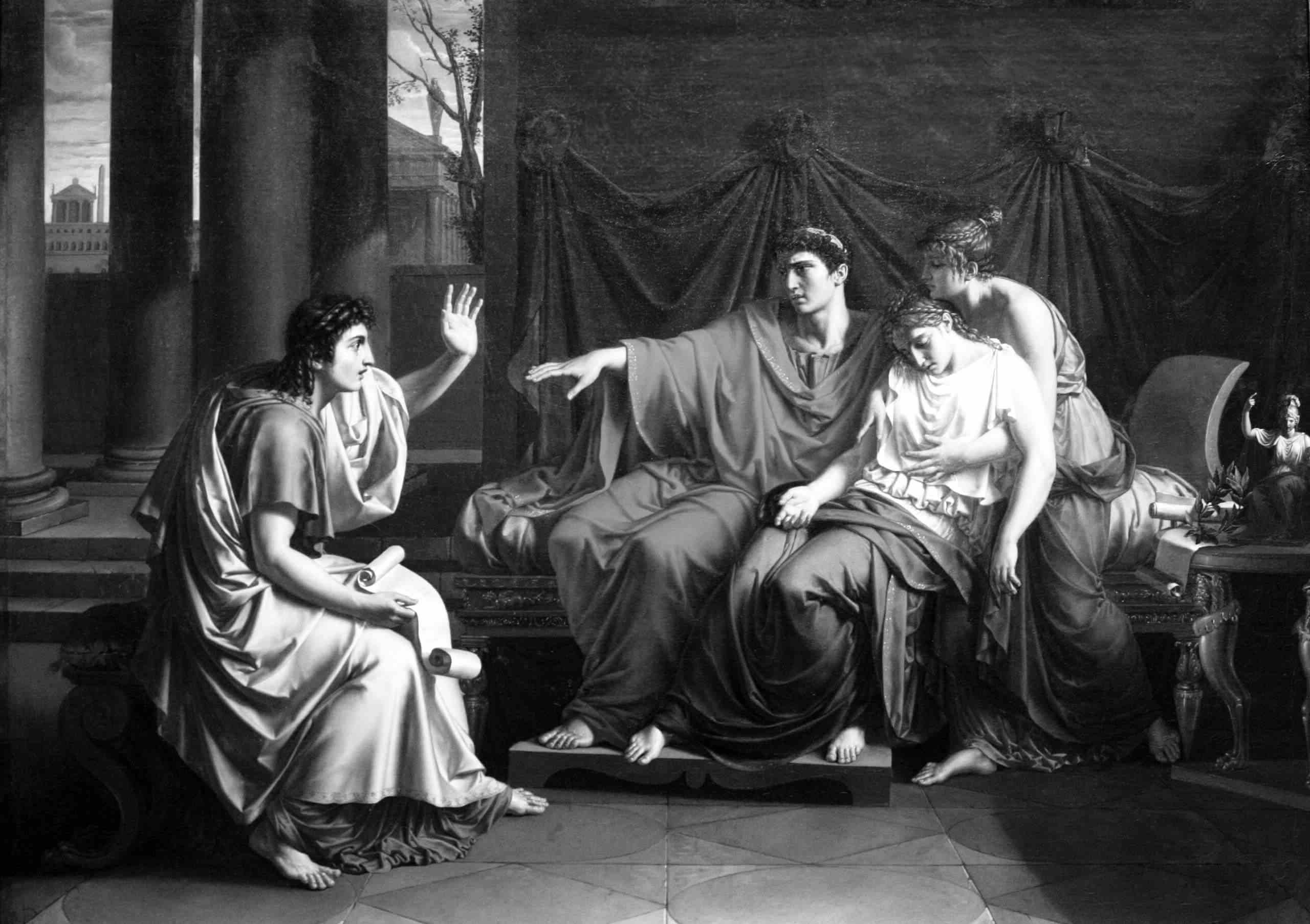
Curious about the epic tale that has captivated audiences for centuries? Aeneid, an ancient masterpiece by Virgil, weaves a rich tapestry of adventure, destiny, and heroism. This legendary poem tells the story of Aeneas, a Trojan hero, and his perilous journey to found what would become Rome. With its intricate blend of myth and history, Aeneid not only serves as a cornerstone of Latin literature but also offers profound insights into Roman culture and identity. Whether you're a history buff, literature enthusiast, or simply love a good story, discovering 30 facts about Aeneid promises a fascinating glimpse into an epic that has shaped storytelling for millennia. Ready to delve into the world of gods, heroes, and ancient battles? Let's uncover the legacy of Aeneid together.
The Origins of the Aeneid
The Aeneid is an epic poem that has fascinated readers for centuries. Written by the Roman poet Virgil, it tells the story of Aeneas, a Trojan who travels to Italy and becomes the ancestor of the Romans.
- Virgil wrote the Aeneid between 29 and 19 BCE.
- The poem was commissioned by Emperor Augustus to glorify Rome's origins.
- Virgil spent the last ten years of his life working on the Aeneid.
- The Aeneid is divided into 12 books, similar to Homer's epics.
- Virgil died before he could complete the final revisions of the poem.
The Plot of the Aeneid
The Aeneid follows Aeneas's journey from the ruins of Troy to the founding of what would become Rome. Along the way, he faces numerous challenges and adventures.
- The story begins with Aeneas fleeing Troy after its destruction by the Greeks.
- Aeneas's mother, Venus, is a key divine figure who aids him throughout his journey.
- Aeneas's journey mirrors that of Odysseus in Homer's Odyssey.
- Aeneas visits the underworld in Book 6, where he meets the ghost of his father.
- The poem ends with Aeneas defeating Turnus, securing his future in Italy.
Themes in the Aeneid
The Aeneid explores several themes, including duty, fate, and the struggle between personal desires and public responsibilities.
- Duty, or "pietas," is a central theme, as Aeneas often sacrifices personal happiness for the greater good.
- Fate plays a crucial role, with Aeneas's destiny preordained by the gods.
- The conflict between love and duty is exemplified in Aeneas's relationship with Dido.
- The Aeneid also reflects Roman values such as bravery, loyalty, and respect for the gods.
- The poem serves as a political allegory, promoting Augustus's regime.
Characters in the Aeneid
The Aeneid features a rich cast of characters, both mortal and divine, who influence Aeneas's journey.
- Aeneas is the protagonist, known for his piety and leadership.
- Dido, the queen of Carthage, falls in love with Aeneas but is ultimately abandoned by him.
- Turnus, the leader of the Rutulians, opposes Aeneas in Italy.
- Anchises, Aeneas's father, provides guidance even after his death.
- Ascanius, Aeneas's son, represents the future of the Trojan lineage.
Influence and Legacy of the Aeneid
The Aeneid has had a lasting impact on literature, art, and culture, influencing countless works and inspiring generations of readers.
- Dante's Divine Comedy was heavily influenced by the Aeneid, with Virgil serving as Dante's guide.
- The Aeneid has been translated into numerous languages, making it accessible worldwide.
- Many Renaissance artists, including Raphael and Titian, depicted scenes from the Aeneid.
- The poem has been adapted into various operas, including works by Purcell and Berlioz.
- The Aeneid is often studied in schools and universities as a cornerstone of classical literature.
Fun Facts About the Aeneid
Beyond its literary significance, the Aeneid is full of interesting tidbits that add to its allure.
- Virgil requested that the Aeneid be burned upon his death, but Augustus ordered its preservation.
- The Aeneid has inspired numerous films, including the 1962 Italian film "The Avenger."
- The phrase "Aeneas's shield" refers to a detailed description of the future of Rome depicted on his shield.
- The Aeneid has been referenced in modern literature, including James Joyce's "Ulysses."
- The poem's opening line, "Arma virumque cano," translates to "I sing of arms and the man," setting the epic tone.
A Final Glance at Aeneas's Epic Saga
We've journeyed through the twists and turns of Aeneas's adventures, uncovering 30 fascinating facts about the Aeneid. From its origins in ancient Rome to its lasting impact on literature and culture, this epic poem has proven itself as a cornerstone of classical mythology. Virgil's masterpiece not only tells the story of a hero's quest to found a new homeland but also explores themes of fate, divine intervention, and human struggle, resonating with readers across centuries. Whether you're a student, a history buff, or just someone who loves a good story, the Aeneid offers a rich tapestry of characters, mythology, and history that continues to captivate and inspire. So, here's to Aeneas—may his epic voyage continue to enlighten and entertain generations to come.
Was this page helpful?
Our commitment to delivering trustworthy and engaging content is at the heart of what we do. Each fact on our site is contributed by real users like you, bringing a wealth of diverse insights and information. To ensure the highest standards of accuracy and reliability, our dedicated editors meticulously review each submission. This process guarantees that the facts we share are not only fascinating but also credible. Trust in our commitment to quality and authenticity as you explore and learn with us.


